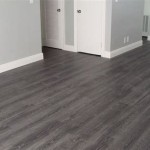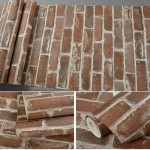How To Whitewash Hardwood Floors: A Comprehensive Guide
Whitewashing hardwood floors provides a light, airy, and often rustic aesthetic, transforming a room with its subtle, translucent finish. This process involves applying a diluted paint or stain to the hardwood, allowing the natural grain to remain visible underneath the white layer. Achieving a successful whitewashed floor requires careful preparation, the right materials, and meticulous application.
This article will detail the steps involved in whitewashing hardwood floors, encompassing preparation, application, and necessary precautions to ensure a durable and visually appealing result. The information presented aims to equip individuals with the knowledge to confidently undertake this project, whether they are seasoned DIY enthusiasts or beginners.
Key Point 1: Preparing the Hardwood Floors
Proper preparation is the foundation of a successful whitewashing project. The existing floor finish must be completely removed to allow the whitewash to penetrate and adhere to the wood effectively. This typically involves sanding the floors down to bare wood.
Firstly, clear the room completely of all furniture, rugs, and other obstructions. Cover any adjacent areas, such as walls and doorways, with plastic sheeting to protect them from dust and splatters. Ensure adequate ventilation in the room by opening windows and doors; consider using a fan to circulate air.
Next, inspect the floor for any existing damage, such as loose boards, protruding nails, or deep scratches. Address these issues before sanding. Loose boards should be secured, nails hammered down or replaced, and deep scratches filled with wood filler. Allow the wood filler to dry completely according to the manufacturer's instructions and then sand it smooth.
The sanding process typically involves using a drum sander for the main floor area and an edge sander for the perimeter. Start with a coarse-grit sandpaper (e.g., 36-grit or 40-grit) to remove the existing finish. Sand in the direction of the wood grain, overlapping each pass slightly to ensure even removal. After the first pass, switch to a medium-grit sandpaper (e.g., 60-grit or 80-grit) and repeat the sanding process. Finally, use a fine-grit sandpaper (e.g., 100-grit or 120-grit) for a smooth finish. Pay close attention to corners and edges, ensuring they are sanded evenly with the rest of the floor.
After sanding, thoroughly vacuum the entire floor to remove all sanding dust. Use a shop vacuum with a brush attachment to reach corners and crevices. Following vacuuming, wipe the floor with a tack cloth to pick up any remaining dust particles. This step is crucial for ensuring a smooth and even whitewash application.
Key Point 2: Selecting the Right Materials and Applying the Whitewash
Choosing the appropriate materials is critical for achieving the desired whitewashed effect and ensuring the longevity of the finish. The primary materials include the whitewash product itself, applicators, and a protective topcoat.
The whitewash product can be either a diluted latex paint or a specialized whitewash stain. Latex paint offers affordability and ease of use, but it may create a more opaque finish. Whitewash stains are specifically formulated for this purpose, often providing a more translucent and natural-looking effect. When using latex paint, it is typically diluted with water in a ratio of 1:1 or 1:2, depending on the desired opacity.
For applying the whitewash, several options are available, including paintbrushes, rollers, and rags. Paintbrushes are suitable for smaller areas and intricate details. Rollers provide faster coverage for larger surfaces. Rags are often preferred for achieving a more textured and rustic look, as they allow for greater control over the application and wiping process.
Before applying the whitewash to the entire floor, it is advisable to test it in an inconspicuous area to ensure the desired color and effect are achieved. Apply the whitewash to a small section of the floor and let it sit for a few minutes. Then, wipe off the excess with a clean rag. Observe the result and adjust the dilution ratio or application technique as needed.
When applying the whitewash to the entire floor, work in small sections, following the direction of the wood grain. Apply the whitewash evenly using the chosen applicator. Allow the whitewash to sit for a few minutes, depending on the desired intensity of the whitewashed effect. Then, wipe off the excess with a clean rag, again following the direction of the wood grain. The longer the whitewash sits before wiping, the more pronounced the effect will be. Overlapping the sections slightly will help to ensure a seamless finish.
Allow the whitewash to dry completely according to the manufacturer's instructions. This may take several hours or even overnight, depending on the environmental conditions. Once the whitewash is dry, inspect the floor for any unevenness or missed spots. If necessary, apply a second coat of whitewash, following the same procedure as before.
Key Point 3: Protecting the Whitewashed Floor
After applying the whitewash, it is essential to protect the floor with a durable topcoat to prevent wear and tear and maintain its appearance. A clear polyurethane finish is commonly used for this purpose.
Polyurethane finishes are available in water-based and oil-based formulations. Water-based polyurethanes are low in VOCs (volatile organic compounds), dry quickly, and do not yellow over time. Oil-based polyurethanes provide a more durable finish but have higher VOCs, dry more slowly, and may yellow over time. The choice between the two depends on individual preferences and considerations.
Before applying the polyurethane, ensure the whitewashed floor is completely dry and free of dust. Lightly sand the floor with a fine-grit sandpaper (e.g., 220-grit) to create a smooth surface for the polyurethane to adhere to. Vacuum the floor thoroughly and wipe it with a tack cloth to remove any sanding dust.
Apply the polyurethane in thin, even coats, following the manufacturer's instructions. Use a high-quality brush or roller specifically designed for applying polyurethane. Work in the direction of the wood grain, overlapping each pass slightly. Avoid applying too much polyurethane at once, as this can lead to drips and unevenness.
Allow the first coat of polyurethane to dry completely according to the manufacturer's instructions. Lightly sand the floor with a fine-grit sandpaper to smooth out any imperfections. Vacuum the floor thoroughly and wipe it with a tack cloth. Apply a second coat of polyurethane, following the same procedure as before. For added durability, a third coat may be applied.
Allow the final coat of polyurethane to dry completely before walking on the floor or replacing furniture. This may take several days, depending on the type of polyurethane used and the environmental conditions. Avoid placing heavy objects on the floor during the curing process. Once the polyurethane is fully cured, the whitewashed hardwood floors will be protected and ready for use.
Additional protective measures include using area rugs in high-traffic areas, placing felt pads under furniture legs, and regularly sweeping or vacuuming the floor to remove dirt and debris. These practices will help to maintain the beauty and longevity of the whitewashed hardwood floors for years to come.

Wood Floor Refinishing And Whitewashing The Honeycomb Home

Wood Floor Refinishing And Whitewashing The Honeycomb Home

Are Whitewashed Hardwood Floors Still Popular Keystone Floor Care Inc
How To Get The Perfect White Wash Effect On Your Wooden Floor Art Of Clean 01223 863632

How To Whitewash And Seal A Wood Floor Diy Steps Milk Paint Lime Wash Antique Look

Whitewash Hardwood Floors Wood Flooring La

Diy Whitewashed Wood Floors Renovation Semi Pros

Diy Whitewashed Wood Floors Renovation Semi Pros

Studio Hardwood Flooring Stained Or Whitewashed Addicted 2 Decorating

Trendy Whitewashed Hardwood Floors
Related Posts








